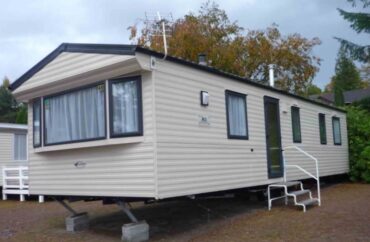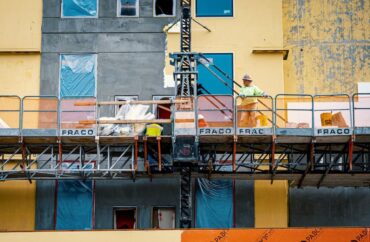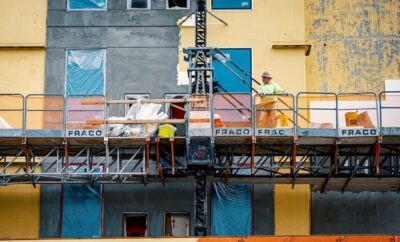
NAR: Q4 of 2022, nearly 9 out of 10 metro areas saw increases in home prices
Single-family existing-home sales prices climbed in almost 90% of measured metro areas – 166 of 186 – in the fourth quarter. The national median single-family existing-home price increased 4.0% from one year ago to $378,700.
According to the National Association of Realtors’ most recent quarterly report, nine out of ten metro markets saw home price increases in the fourth quarter of 2022, despite mortgage rates above 7%. Over the same time period, 18% of the 186 tracked metro regions saw double-digit price hikes, down from 46% in the third quarter of 2022.
The national median single-family existing-home price increased 4.0% year on year to $378,700. When compared to the previous quarter’s 8.6%, year-over-year price growth has slowed.
“A slowdown in home prices is underway and welcomed, particularly as the typical home price has risen 42% in the past three years,” According to NAR Chief Economist Lawrence Yun, these cost hikes have significantly outpaced wage and consumer price inflation of 15% and 14%, respectively, since 2019.
“Far fewer metro markets experienced double-digit price gains in the latest quarter.”
The South had the highest share of single-family existing-home sales (45%) among the major U.S. regions in the third quarter, with a 4.9% year-over-year price increase. Prices in the Northeast increased by 5.3%, in the Midwest by 4.0%, and in the West by 2.6%.
“Even with a projected reduction in home sales this year, prices are expected to remain stable in the vast majority of the markets due to extremely limited supply,” Yun continued.
“Moreover, there are signs that buyers are returning as mortgage rates decline, even with inventory levels near historic lows.”
The top ten metro regions with the highest year-over-year price increases all saw rises of at least 14.5%, with seven of those markets being in Florida and the Carolinas. Farmington, New Mexico is one of them. North Port-Sarasota-Bradenton, Florida (20.3%); Naples-Immokalee-Marco Island, Florida (17.2%); Greensboro-High Point, N.C. (17.0%); Myrtle Beach-Conway-North Myrtle Beach, South Carolina-North Carolina. Oshkosh-Neenah, WI (16.2%); Winston-Salem, N.C. (16.0%). El Paso, Texas (15.7%); Punta Gorda, Florida (15.2%); and Deltona-Daytona Beach-Ormond Beach, Florida (14.5%).
California accounted for half of the top ten most expensive markets in the United States, including San Jose-Sunnyvale-Santa Clara, Calif. ($1,577,500; -5.8%); San Francisco-Oakland-Hayward, Calif. ($1,230,000; -6.1%); Anaheim-Santa Ana-Irvine, Calif. ($1,132,000; -1.6%); Urban Honolulu, Hawaii ($1,090,200;
In the fourth quarter of 2022, roughly one out of every ten markets (11%; 20 of 186) witnessed housing price reductions.
“A few markets may see double-digit price drops, especially some of the more expensive parts of the country which have also seen weaker employment and higher instances of residents moving to other areas,” Yun added.
Housing affordability was aggravated in the fourth quarter of 2022 by rising property prices and mortgage rates, which had nearly doubled since the beginning of the year.
A typical existing single-family home with a 20% down payment had a monthly mortgage payment of $1,969.
This marks a 7% increase over the third quarter of last year ($1,838) but a significant gain of 58% – or $720 – over a year earlier. Mortgage payments accounted for 26.2% of family income, up from 25% in the previous quarter and 17.5% a year before.
Once again, first-time buyers seeking to acquire a conventional home during the fourth quarter of 2022 found difficulties due to rising housing costs.
The monthly mortgage payment for a typical starter house priced at $321,900 with a 10% down payment loan increased to $1,931, up about 7% from the previous quarter ($1,806) and about $700, or 57%, from one year ago ($1,233).
Mortgage payments accounted for 39.5% of first-time buyers’ family income, up from 37.8% in the preceding quarter.
If the monthly payment (principal and interest) exceeds 25% of the family’s income, the mortgage is considered unaffordable.
In 71 areas, a family needed a qualifying income of at least $100,000 to finance a 10% down payment mortgage, up from 59 in the previous quarter.
Nonetheless, a qualifying income of less than $50,000 was required for a family to afford a home in 16 cities, down from 17 in the previous quarter.






















